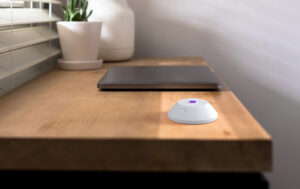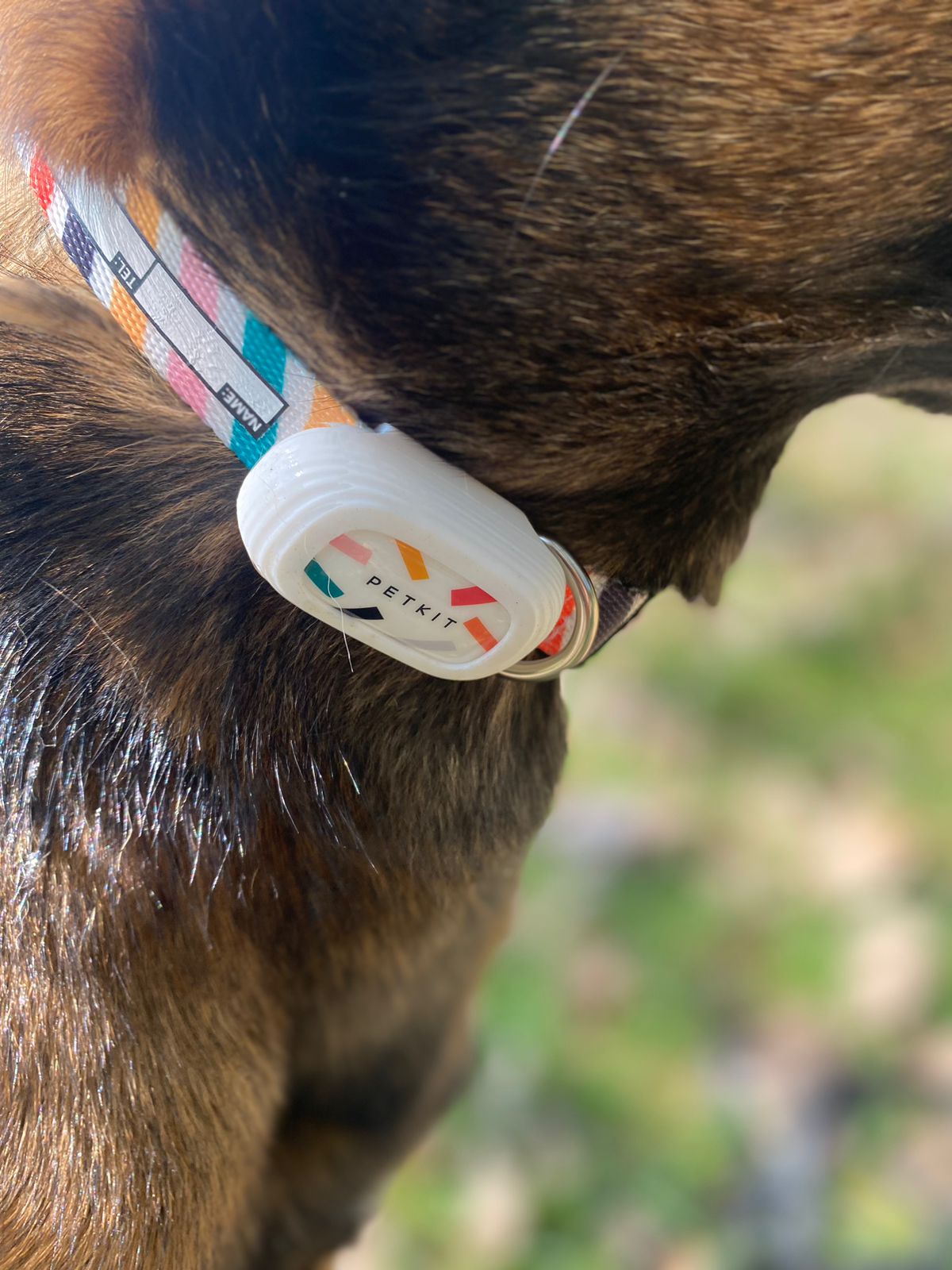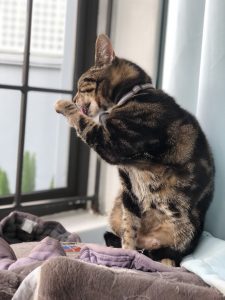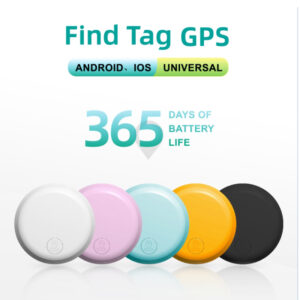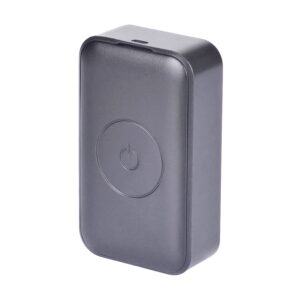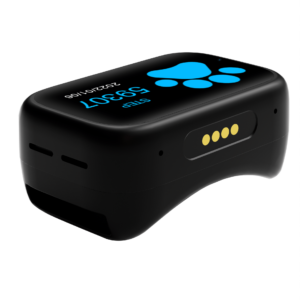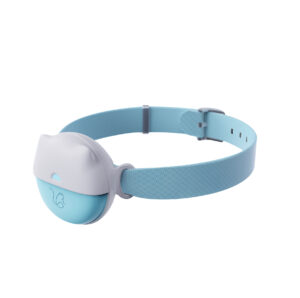Are GPS Pet Trackers Too Heavy for Cats and Small Dogs? Comfort, Size & Fit Explained
One of the questions we hear most is, “Will my pet be able to use your tracker?” It’s a fair worry—no one wants to hang something on their pet’s collar that might feel bulky or uncomfortable. This guide explains what actually affects comfort, how to choose the right size, and how to help even small cats and toy breeds wear a tracker with confidence.
Quick Read
- Weight is rarely the issue; footprint and fit are what matter most.
- Aim for a tracker that sits within your pet’s chest footprint (just below the neck) and a collar that passes the two‑finger comfort rule.
- Smaller devices trade battery life and signal strength for size. Balance matters.
Weight vs. Footprint: What Actually Affects Comfort
In a perfect world, pet tech would be as small as a microchip. In reality, GPS trackers need batteries and antennas—both take space. While “lighter is better” sounds right, what pets notice most isn’t grams, it’s shape and placement:
- Weight: Our trackers are only a few dozen grams—just over 30 g—well within what even tiny cats can comfortably carry.
- Footprint: A device that’s physically too long or wide can bump a shoulder or chest. That’s what causes awkwardness, not the grams on the scale.
Think of a helium balloon: it’s effectively weightless but huge—hard to manage if tied to a collar. Trackers are the opposite: compact, low weight, but the footprint must fit the space available on your pet.
From a practicality standpoint, our compact tracker footprint is around 5 cm wide—small enough for most cats and small dogs when fitted correctly.
How to Measure Your Pet for a Tracker
A quick measure ensures comfort from day one.
1) Neck girth
- Use a soft measuring tape around the base of the neck where the collar rests.
- Add room for comfort: the collar should allow two fingers between collar and fur.
2) Chest footprint (the key check)
- Measure the width of the chest right below the neck/throat (front view).
- Choose a tracker whose length/width sits comfortably within that footprint so it doesn’t tap the shoulder or restrict movement.
3) Fit and placement
- The tracker should lie flat against the collar, centered on the chest or slightly to the side, not dangling or flipping under the jaw.
Comfort checklist
- Tracker fits within chest footprint.
- Collar passes the two‑finger rule.
- No rubbing points, hair pulling, or redness after a few hours.
- Pet can jump, turn, and nap without the tracker snagging.
Tip: If your pet has tracheal sensitivity, orthopedic issues, or is under veterinary rehab, ask your vet which collar style (flat collar vs. harness mount) is best.
How Small Is Too Small? Battery and Antenna Trade-offs
Tiny looks cute, but physics still applies:
- Batteries: Smaller batteries need more frequent charging. If you don’t want to charge daily, don’t go ultra‑tiny.
- Antennas: GPS and cellular antennas work better with a bit of size. Cut them too small and signal reliability drops—especially when your pet is hiding under decks, in garages, or moving quickly.
If your priority is the best outdoor recovery performance, choose a model with a balanced footprint—not the smallest possible.
Model Fit Guide (Cats, Kittens, and Small Dogs)
Every pet is different, but these general notes will help you match lifestyle to device. For exact weights and dimensions (L × W × H in mm), please check each product page—they include current specs, photos on small pets, and fit notes.
- Agile Pro GPS Pet Tracker
- Compact, curved profile to sit comfortably on cat collars and small‑dog gear.
- Great all‑rounder for active adult cats and small breeds.
- Infinity Pro GPS Pet Tracker
- Longer‑life design for owners who prefer fewer charges.
- Ideal for adventurous outdoor cats and small dogs who roam wider.
- Infinity 4G GPS Pet Tracker
- 4G coverage for reliable, broad‑area tracking.
- Suited to pets who explore beyond the neighborhood or in patchy signal areas.
- Agile 4G GPS Pet Tracker
- Combines a compact design with 4G performance.
- A smart pick for small pets in urban/suburban environments.
Helpful add‑ons
- BLE Beacon for Infinity Pro & Agile Pro: Improves indoor locating where GPS can struggle (apartments, garages, under metal roofs).
GPS vs. AirTag vs. Microchip: Comfort and Reliability
Each tool has a place—here’s the quick breakdown focused on weight, comfort, and find‑ability.
- GPS Trackers (TailMe)
- Purpose-built for live tracking outdoors and in motion.
- Small, pet‑shaped footprint; designed for collars/harnesses.
- Works beyond Bluetooth range; best for actually finding a moving pet.
- AirTag‑style tags (TailTags)
- Very lightweight and budget‑friendly; great for “I left the carrier somewhere” or for indoor locating in dense areas.
- Community/Bluetooth dependent; not a replacement for GPS outdoors.
- Comfort is excellent due to minimal weight, but range and reliability outdoors are limited.
- Microchips
- Permanent ID, no weight or comfort issues for daily wear.
- Not a tracker; helps shelters/vets contact you after your pet is found and scanned.
Get Your Pet Used to a Tracker (Cats and Toy Breeds Included)
Most pets adjust in a day or two. Gentle steps make it easy: 1) Let them sniff the tracker first; reward with a treat. 2) Clip the tracker on for short sessions at home; play or feed during wear. 3) Increase wear time daily; keep the collar snug-but-comfy (two‑finger rule). 4) Check for any rubbing during the first week and adjust placement if needed.
Why Strength Isn’t the Limiting Factor
Cats and dogs are remarkably strong through the shoulders and neck. Even a tiny cat can carry far more than a few dozen grams without strain. In practice, comfort comes down to shape and fit—keeping the tracker’s footprint within the chest area and ensuring a stable, snug collar.
FAQs
Q: What is a safe weight for a cat GPS tracker?
A: For most cats, a few dozen grams is well tolerated. Focus on footprint and fit—if the device sits within the chest area and the collar is snug (two‑finger rule), comfort is typically excellent.
Q: Will a GPS tracker restrict my pet’s movement?
A: Not when sized correctly. If the tracker’s footprint fits within your pet’s chest width and is mounted securely, your pet should walk, jump, and nap normally.
Q: How big is too big for a small cat?
A: If the tracker extends beyond the chest footprint or taps the shoulder while walking, it’s too large for that pet. Choose a more compact model.
Q: How often will I need to charge a small tracker?
A: Smaller devices need more frequent charging. Exact intervals depend on model, coverage, and update frequency. See each product page for typical battery ranges and tips to extend life.
Q: AirTag vs GPS for cats: which is better outdoors?
A: GPS. AirTag‑style tags can help indoors or in crowded areas, but GPS is better for real‑time outdoor location—especially when your cat is moving.
Q: How do I measure my pet to ensure a proper fit?
A: Measure neck girth (two‑finger rule) and the chest width just below the throat. Choose a tracker that fits within that footprint and mount it securely to prevent swinging.
If you’re unsure, our team is happy to help you pick the right size based on your pet’s neck girth, chest width, and routine.


